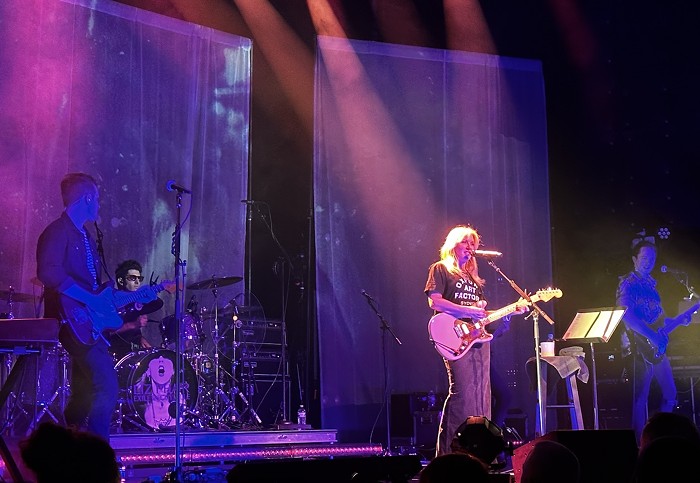
Kankyō Ongaku: Japanese Ambient, Environmental & New Age Music 1980-1990 is the third in Light in the Attic’s series of ambient- and new age-adjacent multidisc compilations, following I Am the Center: Private Issue New Age Music in America 1950-1990 and The Microcosm: Visionary Music of Continental Europe, 1970-1986—although it perhaps more directly fits in with the label’s ongoing Japan Archival Series, which has included Even a Tree Can Shed Tears: Japanese Folk & Rock 1969-1973 and the announced but not yet released Pacific Breeze: Japanese City Pop, AOR & Boogie 1975-1985; Light in the Attic founder Matt Sullivan says there will eventually be nearly two dozen releases in the series. The label has also released direct reissues of albums by influential Japanese musician Haruomi Hosono, whose solo work is represented on this new Kankyō Ongaku by the comp’s lengthy, achingly gorgeous closing track “Original BGM,” which was originally composed as background music for the MUJI department store.
This all is a very long way of saying Light in the Attic knows what it’s doing in terms of definitive surveys of foundational movements in Japanese music, and in terms of presenting them to western listeners who might be more familiar with the music these works influenced that with the works themselves. The director and selector of this compilation is Portland musician and musicologist Spencer Doran, who records and performs with Visible Cloaks and whose scholarship of the genre is evident in not only his choices but in the set's comprehensive liner notes (co-written with Yosuke Kitazawa). The only real criticism one can have of Kankyō Ongaku is that its three vinyl discs (two CDs) are not enough, because once this music starts to wash over you, it precipitates a mind-state you don’t really want to snap out of.
The assorted tracks, while generally placid and nonspecific, are anything but uniform. There are synth washes aplenty, but there are organic sounds in there, too, often in the form of pianos and bells. Some tracks are arrhythmic while others are rigidly fixed to a repetitive beat. Some are built on sustained chords while others rely on continually moving arpeggios. Only one piece—Ayuo Takahashi’s “Nagareru”—includes singing. There are welcome intrusions of nature, in the form of crashing waves (“Variation•III” by Masashi Kitamura + Photogenix), or flowing water and bird calls (Atiro Iko’s “Praying for Mother/Earth Part 1”), and there are undeniable sounds of human incursion, as with the train-like click-clack on Hideki Matsutake’s “Nemureru Yoru (Karaoke Version)” or the sound of water drops hitting cement on Yellow Magic Orchestra’s “Loom.”
Broadly speaking, the recordings are soothing and warm, and any uneasy elements they introduce are quickly smoothed over by repetition. That is not to say that anything here is boring—far from it: Each track evokes a new and surprising sensation, and listening to the entire set start to finish is a far more involving and encompassing experience than I was expecting. The points of entry, even for utter neophytes, are continuous, and every listener will likely come away from Kankyō Ongaku thirsty for more of this stuff.
The vinyl pressings are very good, with silent backgrounds and full, robust dynamic range. I had mild dish-warps on two of the vinyl discs in my review copy, but this is likely an anomaly, and the pressing defect did not lead to any problems playing the discs (I also compared notes with another reviewer who did not encounter the same issue). The packaging is lovely, with cover art featuring the Iwasaki Art Museum, which opened in 1983—a visual component that illustrates the parallel courses the different disciplines of Japanese art were on at this time, and a reminder of how inextricable these sounds were with the concepts of design and physical space. But even without any of this context, Kankyō Ongaku is an immersive, rewarding listen, and a perfect, if temporary, antidote to the ego-driven sounds that characterize today’s mainstream music.


















